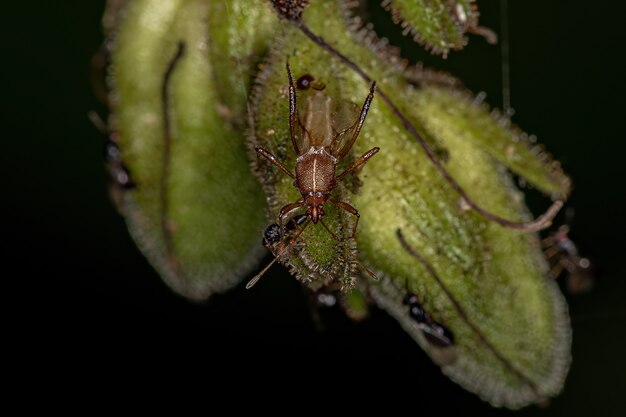The Mysterious Origins of Lyme Disease: Unraveling Nature's Puzzles
Lyme disease is a name that resonates with a mix of concern and confusion. As ticks emerge as the villains spreading this ailment, many wonder: Where did Lyme disease come from, and how did it become a common concern? In this article, we explore the origins of Lyme disease, delve into the intriguing role of ticks, and provide helpful insights into understanding this condition better.
Understanding Lyme Disease: A Brief Overview
What is Lyme Disease?
Lyme disease is a bacterial infection primarily caused by the bacterium Borrelia burgdorferi. It is transmitted through the bite of an infected black-legged tick, commonly known as the deer tick. The disease is prevalent in regions offering conducive environments for ticks—wooded and grassy areas being prime locations.
How Lyme Disease Manifested
The condition often starts with flu-like symptoms and the notorious "bullseye" rash. If untreated, it can lead to more severe complications affecting the joints, heart, and nervous system. Each year, thousands of new cases are reported worldwide, with a higher prevalence in North America and Europe.
Peeling Back the Layers: The Discovery of Lyme Disease
Historical Glance
The journey into understanding Lyme disease began in the 1970s. It was first identified in Lyme, Connecticut, when a perplexing outbreak of arthritis-like symptoms affected residents. This discovery marked the beginning of extensive research into the mysterious illness.
The Pioneers
Dr. Willy Burgdorfer played a crucial role in identifying the bacterium responsible for Lyme disease. His groundbreaking work in the 1980s unlocked crucial knowledge, leading to better diagnostic and treatment approaches.
The Curious Case of Ticks: Nature’s Biologic Vector
The Role of Ticks
Ticks have a unique life cycle that involves three stages: larva, nymph, and adult. Each stage requires a blood meal from hosts such as small mammals, birds, deer, and occasionally, humans. Ticks become infected by feeding on infected hosts, thus becoming carriers of Borrelia burgdorferi.
Tick Habitat and Behavior
Ticks thrive in humid environments and are commonly found in forested or dense vegetation areas. They wait on grass or shrub tips, latching onto hosts as they pass by—a process known as "questing." Awareness of these habitats is crucial for preventing tick bites.
From Ticks to Humans: How Does Lyme Disease Spread?
The Infection Cycle
The infection process begins when a tick carrying the Lyme-causing bacteria bites a host. Transmission usually occurs if the tick remains attached for 36-48 hours. Early detection and removal of ticks significantly reduce the risk of contracting Lyme disease.
Understanding the Risk Factors
- Location: Living in or visiting areas known for Lyme disease significantly increases exposure to infected ticks.
- Season: Late spring to early summer is peak activity time for ticks.
- Outdoor Activities: Hiking, camping, and gardening in tick-prone areas heighten the risk.
Pinpointing the Geological Spread: How Lyme Disease Expanded
Expansion Across Continents
Initially identified in North America, Lyme disease has since been recognized globally, affecting parts of Europe, Asia, and beyond. The spread can be attributed to changes in climate, land use, and increased travel and mobility.
Climate Change Impact
Warmer temperatures have expanded the range and activity period of ticks. This has increased the potential for Lyme disease transmission as ticks migrate to previously unaffected areas.
Protecting Yourself: Prevention and Awareness
Tick Bite Prevention Strategies
- Dress Smart: Wear long sleeves and pants when in wooded or grassy areas. Light-colored clothing makes it easier to spot ticks.
- Use Repellents: Consider using repellents containing DEET on skin and clothing.
- Check and Remove: Regularly check your body and clothing for ticks after spending time outdoors. Prompt and proper removal of ticks can prevent disease transmission.
Building Awareness
Educating communities about tick habitats, appropriate outdoor behaviors, and symptoms of Lyme disease is crucial in preventing and managing the spread of the disease.
Lyme Disease Treatment and Ongoing Challenges
Diagnostic Pathways
Early diagnosis involves recognizing symptoms and, if necessary, confirming with blood tests that detect antibodies against Borrelia burgdorferi.
Treatment Options
Antibiotics are the primary treatment for Lyme disease. Early intervention often leads to successful recovery, although some individuals may experience lingering symptoms—known as Post-Treatment Lyme Disease Syndrome (PTLDS).
Challenges in Management
The complexity of Lyme disease stems from its varied symptoms and potential long-term effects. Continuous research is essential to improve diagnostic methods and treatment protocols.
As we explore Lyme disease, its origins, and its implications, it's crucial to stay informed and proactive. Understanding its nature and strategies to prevent tick bites empowers us to manage this condition effectively. Being knowledgeable about Lyme disease enhances our ability to enjoy the great outdoors safely.
Key Takeaways: A Quick Glance 📝
- Historical Insights: Lyme disease was first identified in Lyme, Connecticut, in the 1970s.
- Tick Biology: Ticks, particularly black-legged ticks, are vectors for Lyme disease.
- Prevention Tips:
- Wear protective clothing in tick-prone areas.
- Use tick repellents and perform body checks.
- Global Spread: The disease is expanding due to factors like climate change.
- Diagnostic Measures: Early recognition and antibiotic treatment are crucial.
Informed prevention and awareness are vital in managing Lyme disease and ensuring outdoor safety. 🌿
